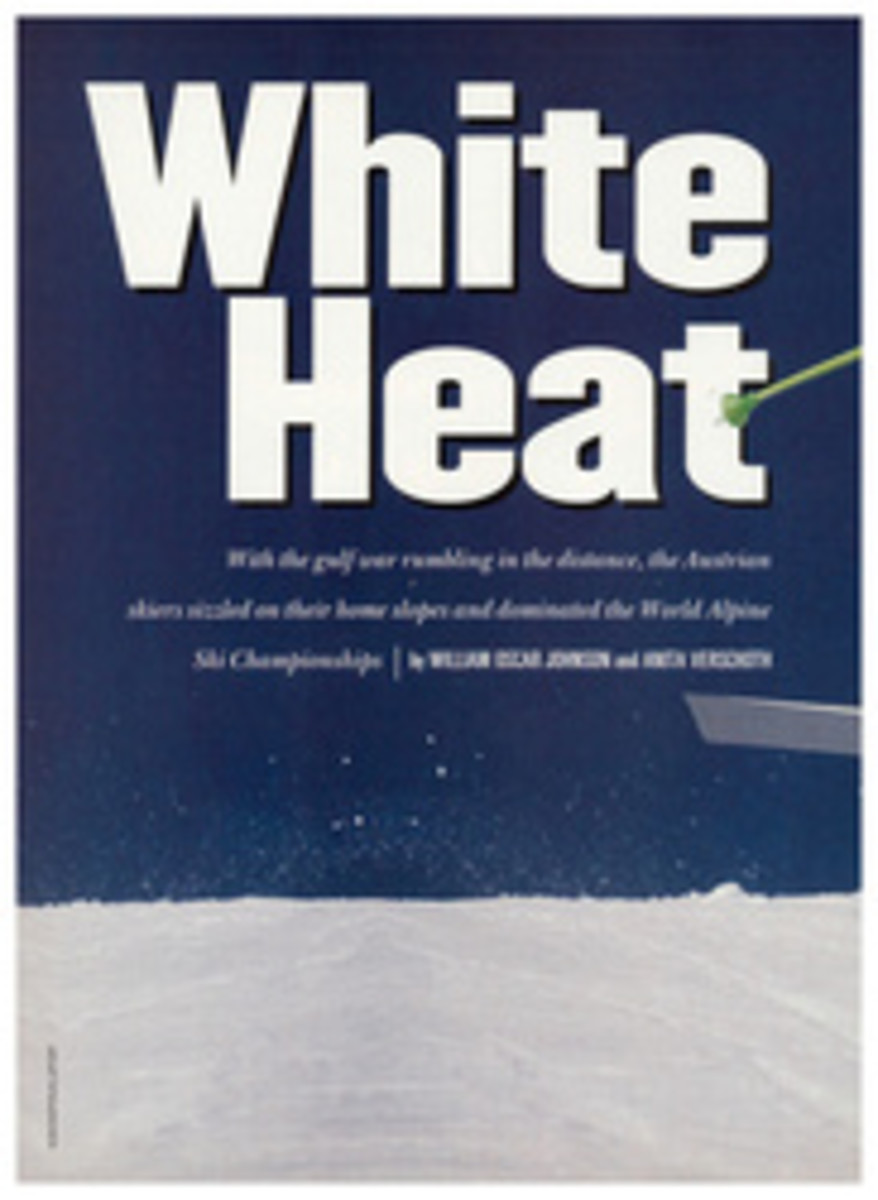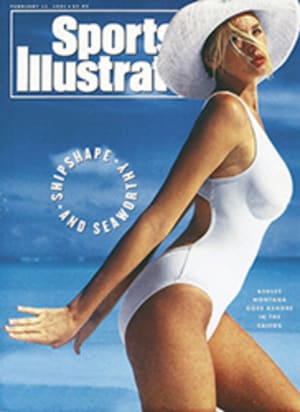
The Winner Was a Zinger
There's one thing you can count on when a golf tournament is contested on three seaside courses at the same time—chaos. The golfers playing the cliff holes in Thursday's sunshine cackle with glee; the players who battle Saturday's gales on those same holes curse their luck. On the forest holes, golf balls disappear from fairways, and bunkers appear where none should be. Throw in a tricky new course none of the golfers have played before, and soon they are pulling out their hair. Someone shoots 65 at Pebble Beach, but no one knows if that's as good as a 68 at Spyglass Hill or a 69 at Poppy Hills, the new venue.
"It's kind of a staggered start," said journeyman pro John Cook last Saturday afternoon as darkness and fog settled over the curved track known as California's Monterey Peninsula. "All of a sudden everybody's run the same distance, and there they are."
The next morning on the Pebble Beach Golf Links—the homestretch of the AT&T Pebble Beach National Pro-Am—Cook found himself tied for the lead with Paul Azinger after four holes. But only momentarily. Azinger, winner of six tournaments and more than $3 million in his last four seasons on the PGA Tour, played orderly golf down the stretch, while his closest challengers succumbed to the chaos.
Cook, whose playoff victory in the 1981 Pro-Am is one of his three Tour wins, bogeyed the 5th hole and vanished with a double bogey at No. 10. Third-round leader Rocco Mediate, a delightful kid who looks like Ollie North without the certitude, faltered with bogeys on the 8th and 9th holes. Davis Love III closed to within one stroke of Azinger with a birdie at 6 and hung close until he hit into deep rough on 16.
Suddenly the only guy who looked as if he could challenge the Zinger was TV soap heartthrob Jack Wagner, Cook's amateur partner in the team competition and a four-handicap player. Wagner's blazing finish in the company of the leaders—he carried his team on holes 14 through 17—nearly upstaged Azinger, and it enabled Wagner and Cook to win the team title by a stroke on the final hole. "That guy is a great player," Azinger said afterward. "I never heard of him, but my mom is going crazy over this guy."
Another sidelight to this year's event was the withdrawal of the Cypress Point Golf Club from the tournament rotation, an absence made necessary by that very private club's refusal to submit to the Tour's new minority membership guidelines. Last Friday morning, while a uniformed guard and a wooden barricade protected Cypress against gate-crashers, a few members teed off at an unhurried pace, their drives sailing over a hedgerow and floating to the pastoral calm of a 1st fairway bereft of humanity. "All the color and drama is missing, that's for sure," said head pro Jim Langley, staring out the window of his sleepy golf shop.
For color he could have driven a mile or so uphill to Poppy Hills Golf Course. There the trees were green and the language blue as the pros battled deep ravines, narrow fairways, and greens that looked like Salvador Dali's melted watches. Designed by Robert Trent Jones Jr. for the Northern California Golf Association, the four-year-old public layout was chosen over the nearby Links at Spanish Bay, another Jones design, because it was deemed better able to handle crowds without damage to the environs. Damage to the golfer's psyche apparently was not a consideration.
Heard repeatedly was the complaint that Jones had positioned his fairway bunkers on the wrong side of the dogleg holes—on the inside of the doglegs rather than the outside, where the bunkers better define a hole visually and keep shots from rolling off the fairway. Even Jones conceded, if only in jest, that at least one bunker was misplaced. "I know one thing," he said last Thursday, while playing Poppy Hills as Mike Smith's amateur partner. "That bunker's coming out of the third fairway!" Jones had bogeyed the hole after hitting into that bunker.
Among the most perplexed golfers was second-round leader Azinger, who played Poppy on Saturday after brilliant rounds of 67 at Spyglass and Pebble. "The best hole on that course is the 19th hole," he said after finishing with a hair-raising 73. "I promise you, I did not hit a bad shot."
Grinning broadly—either from shock or from his characteristic delight in the absurd—Azinger described his start on Saturday as "horrendous." After chipping to the green on his first hole, Azinger watched in disbelief as the ball rolled off a mound and into a water hazard. On the next hole, a par 3, his four-iron shot at the pin buried under the lip of a sand bunker, and he wound up with a double bogey. At his 12th hole, Azinger's two-iron off the tee of a narrow par 5 landed in the fairway but kicked right, rolling 50 yards down a bank and coming to rest against a tree.
Playing without his usual confidence since a final-hole bogey cost him a win at Doral last March, Azinger has struggled with his swing of late. Two weeks ago in Phoenix, he showed his duck hook to teaching pro Jim Flick, who quickly got him back on track. "I didn't hit any irons badly off line the whole tournament," Azinger said Sunday.
With the survivors of the 54-hole cut united for the final round at Pebble, Azinger cast off his worries and went for some flags. He trailed Mediate by two strokes at the outset, but he eagled No. 2—his three-wood shot went around a tree, over a trap and stopped nine feet short of the hole—and sank a 45-foot putt for birdie on No. 4. Just as important were par-saving putts from 15 feet on 9 and 12. "It's taken me years to learn how to putt here," said Azinger afterward. "It's my favorite course in the world, but I've always been confused on the greens, uncertain how much the ocean will pull the ball."
At the finish, Azinger played three careful irons to the 18th green. Two putts gave him his third 67 of the tournament and a 274 total, four shots better than the scores of Corey Pavin and Brian Claar, neither of whom ever threatened.
Later Azinger, whose best previous Pro-Am finish was a tie for 22nd in 1988, shook his head and said, "Every year I swear I'll never play here again, I play so poorly. But how can you not come back? It's so very, very beautiful here."
If you can avoid the chaos.
PHOTO
JACQUELINE DUVOISIN
Sand was only one of the hazards Azinger faced at Poppy Hills, where he shot a third-round 73.

